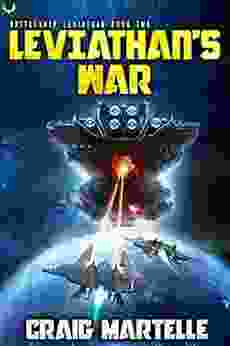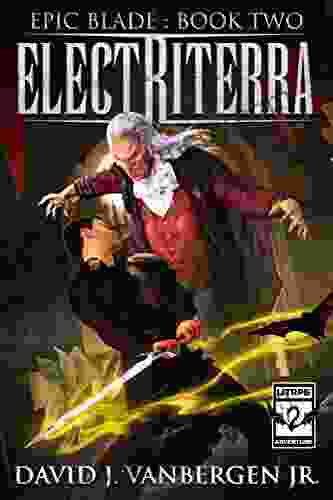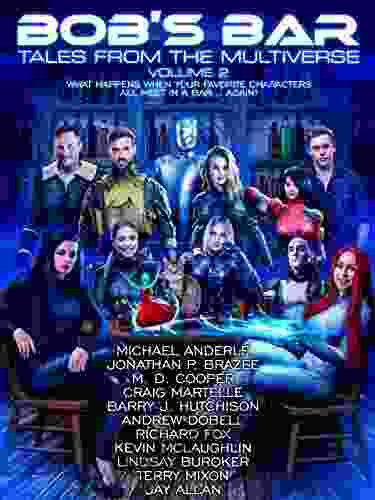Military Sci Fi Battleship: The Ultimate Guide to Space Combat

Space combat is a fascinating and complex topic that has been explored in science fiction for decades. From the classic battleships of Star Wars to the cutting-edge technology of Battlestar Galactica, space combat has captured the imagination of fans around the world.
4.5 out of 5
| Language | : | English |
| File size | : | 4489 KB |
| Text-to-Speech | : | Enabled |
| Screen Reader | : | Supported |
| Enhanced typesetting | : | Enabled |
| Word Wise | : | Enabled |
| Print length | : | 346 pages |
| Lending | : | Enabled |
In this book, we will take a comprehensive look at the history, technology, and tactics of space combat. We will explore the different types of spaceships, weapons, and defenses that have been used in space combat, and we will discuss the strategies and tactics that have been employed by both sides in space wars.
Whether you're a fan of military sci fi or just want to learn more about space combat, this book is a must-read.
Chapter 1: The History of Space Combat
The history of space combat can be traced back to the early days of rocketry. In the 1920s and 1930s, scientists and engineers began to develop rockets that could launch satellites and other payloads into space.
By the 1950s, the United States and the Soviet Union were engaged in a space race to be the first to launch a satellite into orbit. This race eventually led to the development of the first intercontinental ballistic missiles (ICBMs),which could be used to deliver nuclear weapons to targets anywhere in the world.
The development of ICBMs raised the possibility of a nuclear war in space. In response, the United States and the Soviet Union began to develop anti-ballistic missile (ABM) systems to protect their countries from attack.
The ABM race led to the development of new technologies that could be used in space combat. These technologies included radar, lasers, and particle beams.
In the 1980s, the United States and the Soviet Union began to develop space-based weapons systems. These systems included satellites that could be used to track and destroy enemy satellites, and lasers that could be used to destroy enemy spacecraft.
The development of space-based weapons systems raised concerns about the possibility of an arms race in space. In response, the United States and the Soviet Union signed the Outer Space Treaty in 1967. This treaty banned the placement of nuclear weapons in space and limited the use of space for military purposes.
Despite the Outer Space Treaty, the United States and the Soviet Union continued to develop space-based weapons systems. In the 1990s, the United States developed the Global Positioning System (GPS),which could be used to track and guide missiles. The Soviet Union developed a similar system called GLONASS.
The development of GPS and GLONASS led to a new era of space combat. These systems allowed missiles to be guided with greater accuracy, making them more effective against enemy targets.
In the 21st century, the United States and other countries have continued to develop new space-based weapons systems. These systems include unmanned aerial vehicles (UAVs),which can be used to carry out surveillance and attack missions, and hypersonic missiles, which can travel at speeds of up to Mach 5.
The development of new space-based weapons systems is raising concerns about the possibility of a new arms race in space. It is important to remember that the Outer Space Treaty remains in force, and that any use of space for military purposes must be in accordance with the treaty.
Chapter 2: The Technology of Space Combat
The technology of space combat has evolved significantly over the years. In the early days of space combat, spaceships were armed with cannons and rockets. Today, spaceships are armed with a variety of weapons, including lasers, particle beams, and missiles.
Lasers are one of the most common weapons used in space combat. Lasers are beams of concentrated light that can be used to destroy enemy targets. Lasers are effective against a variety of targets, including spacecraft, satellites, and missiles.
Particle beams are another common weapon used in space combat. Particle beams are beams of charged particles that can be used to destroy enemy targets. Particle beams are more powerful than lasers, but they are also more difficult to control.
Missiles are another common weapon used in space combat. Missiles are self-propelled weapons that can be used to attack enemy targets from a distance. Missiles are less accurate than lasers or particle beams, but they are more powerful and can carry a larger payload.
In addition to weapons, spaceships are also equipped with a variety of defenses. These defenses include armor, shields, and electronic warfare systems.
Armor is the physical protection that covers a spaceship. Armor can be made of a variety of materials, including metal, ceramic, and composite materials. Armor can protect a spaceship from enemy fire, but it can also add weight and reduce the spaceship's speed and maneuverability.
Shields are energy fields that can be used to protect a spaceship from enemy fire. Shields are more effective than armor, but they can also be more easily disabled.
Electronic warfare systems are used to disrupt the enemy's sensors and communications. Electronic warfare systems can be used to blind the enemy, deafen them, or even disable their weapons.
The technology of space combat is constantly evolving. New weapons and defenses are being developed all the time. As the technology of space combat continues to evolve, so too will the strategies and tactics used in space warfare.
Chapter 3: The
4.5 out of 5
| Language | : | English |
| File size | : | 4489 KB |
| Text-to-Speech | : | Enabled |
| Screen Reader | : | Supported |
| Enhanced typesetting | : | Enabled |
| Word Wise | : | Enabled |
| Print length | : | 346 pages |
| Lending | : | Enabled |
Do you want to contribute by writing guest posts on this blog?
Please contact us and send us a resume of previous articles that you have written.
 Book
Book Novel
Novel Page
Page Chapter
Chapter Text
Text Story
Story Genre
Genre Reader
Reader Library
Library Paperback
Paperback E-book
E-book Magazine
Magazine Newspaper
Newspaper Paragraph
Paragraph Sentence
Sentence Bookmark
Bookmark Shelf
Shelf Glossary
Glossary Bibliography
Bibliography Foreword
Foreword Preface
Preface Synopsis
Synopsis Annotation
Annotation Footnote
Footnote Manuscript
Manuscript Scroll
Scroll Codex
Codex Tome
Tome Bestseller
Bestseller Classics
Classics Library card
Library card Narrative
Narrative Biography
Biography Autobiography
Autobiography Memoir
Memoir Reference
Reference Encyclopedia
Encyclopedia Otto Toeplitz
Otto Toeplitz Dale F Bloom
Dale F Bloom Dale Olausen
Dale Olausen Jackie Jeffrey
Jackie Jeffrey Jo Boaler
Jo Boaler Dave Westerveld
Dave Westerveld Courtney Epps
Courtney Epps Elizabeth Winthrop
Elizabeth Winthrop Robert Hughes
Robert Hughes Michal Ramsey Smith
Michal Ramsey Smith Kirsten Marion
Kirsten Marion D J Taylor
D J Taylor Timothy Gene Sojka
Timothy Gene Sojka Maggie Ryan
Maggie Ryan Clinton Dobbins
Clinton Dobbins Tahereh Mafi
Tahereh Mafi Gaurav Mahajan
Gaurav Mahajan Cornelius Fichtner
Cornelius Fichtner Cooper The Pooper
Cooper The Pooper Janis B Meredith
Janis B Meredith
Light bulbAdvertise smarter! Our strategic ad space ensures maximum exposure. Reserve your spot today!
 W.B. YeatsFollow ·12.9k
W.B. YeatsFollow ·12.9k Tony CarterFollow ·2.2k
Tony CarterFollow ·2.2k William WordsworthFollow ·9.4k
William WordsworthFollow ·9.4k Jorge AmadoFollow ·9.9k
Jorge AmadoFollow ·9.9k Andy ColeFollow ·14.9k
Andy ColeFollow ·14.9k Deion SimmonsFollow ·2.2k
Deion SimmonsFollow ·2.2k George Bernard ShawFollow ·14.1k
George Bernard ShawFollow ·14.1k Zachary CoxFollow ·10.8k
Zachary CoxFollow ·10.8k

 Cruz Simmons
Cruz SimmonsUnveiling the Secrets: An Insider Guide to School Bonds...
Unlock the Power of School...
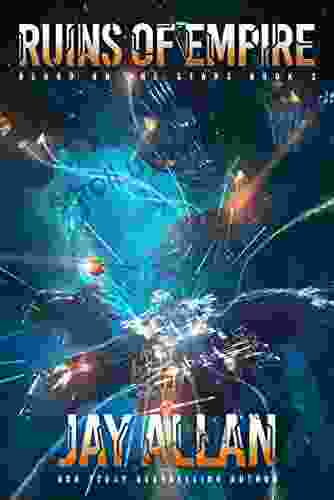
 Gil Turner
Gil TurnerRuins of Empire: Blood on the Stars - The Epic Space...
Ruins of Empire: Blood on the Stars is the...
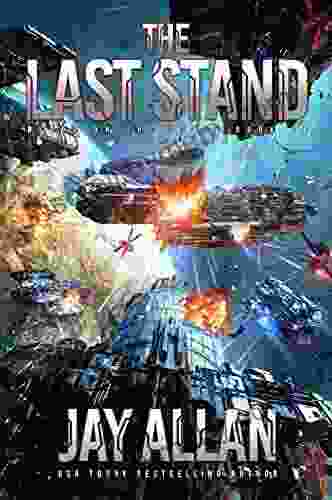
 Allen Ginsberg
Allen GinsbergPrepare for the Ultimate Space Opera: Delve into The Last...
Embark on an...

 Anton Foster
Anton FosterUnleash Your Inner Artist: The Ultimate Guide to Oil...
Chapter 1: The...
4.5 out of 5
| Language | : | English |
| File size | : | 4489 KB |
| Text-to-Speech | : | Enabled |
| Screen Reader | : | Supported |
| Enhanced typesetting | : | Enabled |
| Word Wise | : | Enabled |
| Print length | : | 346 pages |
| Lending | : | Enabled |


